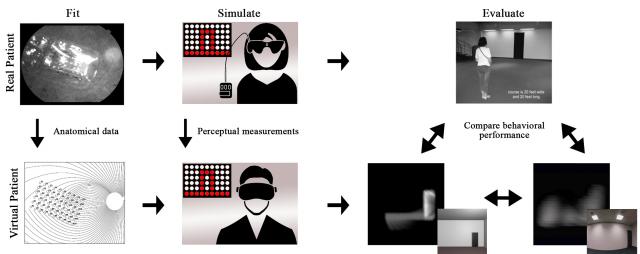Low Vision & Sight Restoration

285 million people in the world are visually impaired, of whom 39 million are blind. Two of the most common causes of blindness in the developed world are retinitis pigmentosa and age-related macular degeneration. Although there is no cure for these diseases, researchers have been working on developing treatment options that can restore some form of useful vision to these individuals.
Head-mounted video display systems and image processing as a means of enhancing low vision are ideas that have been around for more than 20 years. However, recent developments in virtual and augmented reality technology and software have opened up new research opportunities that have the potential to transform how low vision patients engage with the world.
Through the use of VR, we can study how people with low vision use eye and head movements to sample the visual scene and how the visual system adapts to visual impairments. Insights gained from such experiments can inform AR assistive technologies designed to enhance the visual experience of these individuals.
Furthermore, we can use immersive VR to simulate the visual experience of people implanted with a retinal prosthesis, giving sighted people insight into what it might be like to have a bionic eye. Studying how people with different types of retinal implants and degrees of visual impairments respond to various image processing strategies will allow us to develop novel encoding strategies that can improve orientation and mobility.
Selected Publications
Rasla, A., & Beyeler, M. (2022, November). The relative importance of depth cues and semantic edges for indoor mobility using simulated prosthetic vision in immersive virtual reality. In Proceedings of the 28th ACM Symposium on Virtual Reality Software and Technology (pp. 1-11).
Kasowski, J., and Beyeler, M. (2022). Immersive virtual reality simulations of bionic vision. AHs'22: Augmented Humans Conference 2022, pp.1-12. DOI: https://doi.org/10.1145/3519391.3522752
Kasowski, J., Wu, N., & Beyeler, M. (2021). Towards immersive virtual reality simulations of bionic vision. Proceedings of the Augmented Humans (AHs) International Conference, 2021. DOI: https://doi.org/10.1145/3458709.3459003
Beyeler, M., Nanduri, D., Weiland, J.D., Rokem, A., Boynton, G.M., & Fine, I. (2019). A model of ganglion axon pathways accounts for percepts elicited by retinal implants. Sci Rep, 9, 9199. PDF